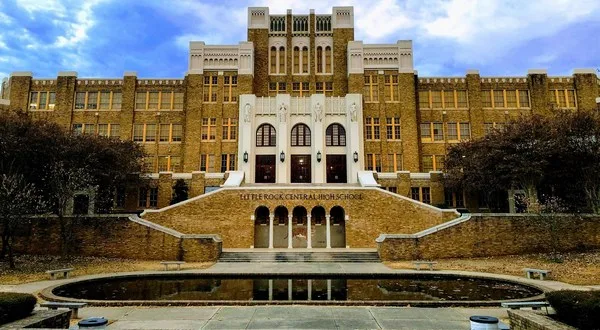
In 1957, nine new African American faces where joining students at the then all-white Little Rock Central High School. Governor Orval Faubus opposed the decision and, in a direct challenge to the federal desegregation law, called in the state National Guard to block the way. When the nine African American student arrived at Little Rock Central High, they were met with over 1,000 angry protesters. It was President Dwight D. Eisenhower who responded resolutely by sending in federal troops for backup. On September 25, the troops escorted the Little Rock Nine to class and then remained on guard through the year. Though Governor Faubus continued to advocate for segregation, the nine students became symbols of courage and optimism.
The landmarks under consideration are Bethel Baptist Church, Birmingham, Ala.; Brown v. Board of Education National Historic Site, Topeka, Kan.; Dexter Avenue King Memorial Baptist Church, Montgomery, Ala.; Edmund Pettus Bridge, Selma, Ala.; Foster Auditorium, Tuscaloosa, Ala.; Frank M. Johnson Jr. Federal Building and U.S. Courthouse and Greyhound Bus Station, Montgomery, Ala.; the Lincoln Memorial, Washington, D.C.; International Civil Rights Center & Museum, Greensboro, N.C.; Little Rock Central High School National Historic Site, Little Rock, Ark.; Martin Luther King Jr. National Historic Site, Atlanta, Ga.; Medgar Evers House, Jackson, Miss.; National Civil Rights Museum at the Lorraine Motel, Memphis, Tenn.; 16th Street Baptist Church, Birmingham, Ala.; and Tuskegee Airmen National Historic Site, Tuskegee, Ala.; and historic West Hunter Street Baptist Church, Atlanta, Ga.
WebReadyTM Powered by WireReady® NSI










